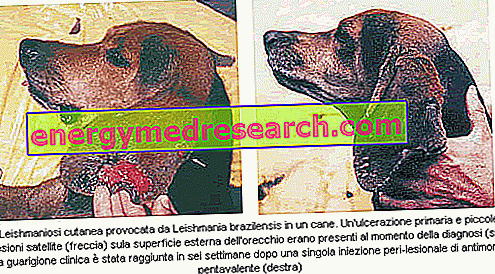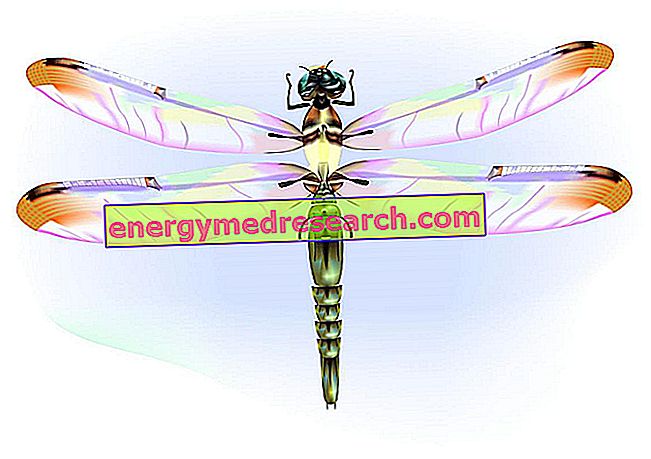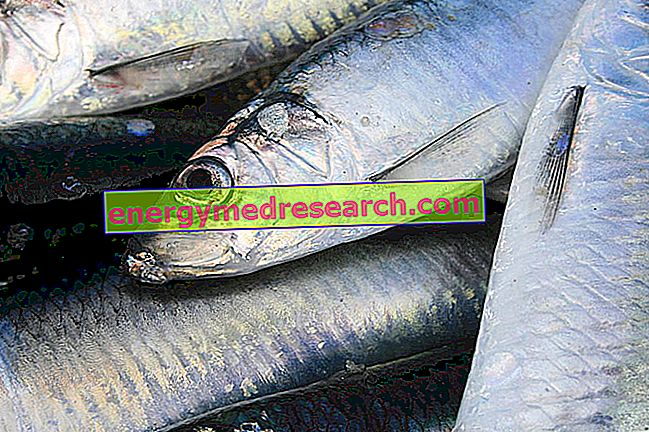Diagnosis A series of methods are available that allow you to diagnose Leishmaniasis even in subjects who do not yet have overt symptomatology. Cyto-histological examination It was a first choice exam, because it was fast enough and could be performed at the veterinary clinic. The technique consists in taking a sample of tissue or cells from a skin lesion or from an organ in which parasites (lymph nodes, spleen, bone marrow, blood) are likely to be found
Category veterinary medicine
Generality Dog conjunctivitis is a very common disorder that can affect animals of any breed and age. In detail, conjunctivitis is an inflammatory disease that can have different causes; it can affect both eyes, or more commonly, it can affect only one eye. Sometimes, the dog's conjunctivitis can be a mild, easily treatable disorder; in other cases, however, it could hide the presence of much more serious eye diseases
The body of invertebrate organisms consists of a series of upper plates known as tergites and lower plates known as sternites; the entire structure is then held together by an extendable and resistant membrane. The insect abdomen contains the digestive tract and the reproductive organs; in most Species it is composed of eleven segments, although the latter is absent in almost all specimens in adult form
When flatulence and aerophagia are a matter of life and death The herrings, to make themselves heard by their peers, produce sound waves emitting air from the anus. The smell has little to do with these; rather with the farts the herring generate bubbles that form high-frequency sound waves, recognizable by their own kind
Particularly widespread is the belief that the wet nose of a dog or cat is synonymous with animal welfare and that, vice versa, a dry nose is a sign of suffering. It is more like an ancient belief, which has its roots in the times when dogs were used also and above all for hunting. For this activity the animal's sense of smell is fundamental and there is a disease, called cimurro ( Morva canina ), which makes the nose dry, irreparably damaging the animal's olfactory capacity
Flea infestation is the most common external parasitosis of dogs and cats . The flea is a small insect belonging to the order of Sifonatteri (also called Afanitteri ), devoid of wings, known for its exceptional jumping ability. Adult fleas constantly live on the body of the host animal to feed on their blood, so they are small hematophagous parasites ; they sting on average 10 times a day and can suck up to 15 times their body weight
The photo of this hot dog reminds us of how dogs don't sweat . To be exact, dogs only sweat from the foot pads of their feet. We realize this, for example, when in the summer months "I trust" leaves fingerprints on the polished floors of the house. Some say that dogs sweat through the tongue
Fleas can be a problem for the dog or cat throughout the year, considering that the heated domestic environments are an ideal habitat for these pests in the winter months; however, the " flea season " would typically go from the beginning of spring to the end of summer. The life cycle of the parasite lasts on average 2-3 weeks; adult fleas live and mate on the host without ever abandoning it, except in cases where they are forced
Fleas can jump from one animal to another, however, dogs and cats infest more easily when they attend places where they are present on the ground waiting for a guest. Therefore, both the parasites present on the animal and those in the environment must be checked. To effectively treat our four-legged friends, the products must have a rapid ability to kill fleas and a long-lasting effect (residual activity) in order to prevent re-infestations
Cats and dogs suffer from excessive heat , especially when associated with high humidity. In fact, during the summer season, even pets can become dehydrated , heat-stroke and other dangerous consequences. To prevent cats and dogs from becoming dehydrated, it is necessary to maintain a good air exchange and often top up their bowl with fresh water
The presence of fleas is generally well tolerated by cats and dogs, however some animals become sensitive to some components of the flea's saliva and develop a skin reaction, called flea allergy dermatitis ( DAP ). This is manifested by severe itching, localized redness and marked loss of hair due to the excessive act of licking and scratching, especially in the abdomen, the back of the thigh, the hips and the tail










